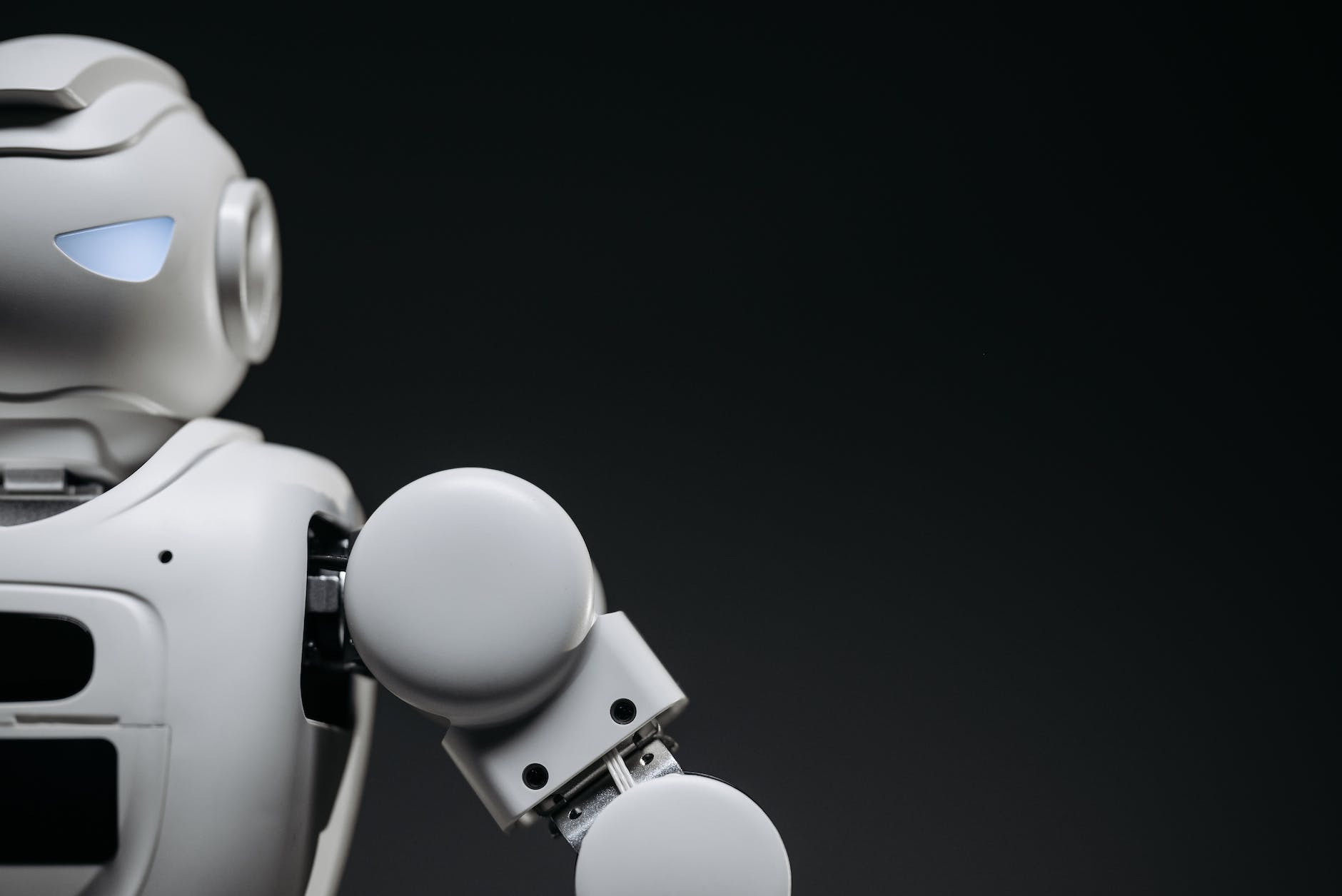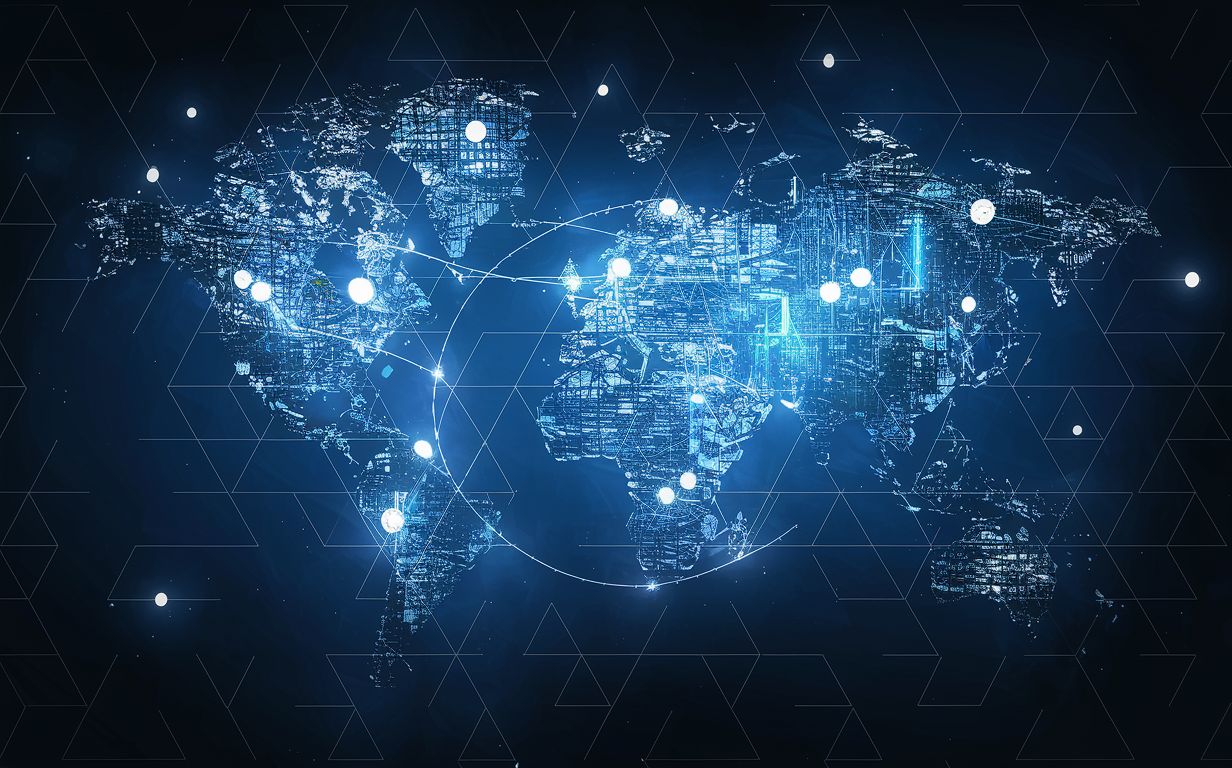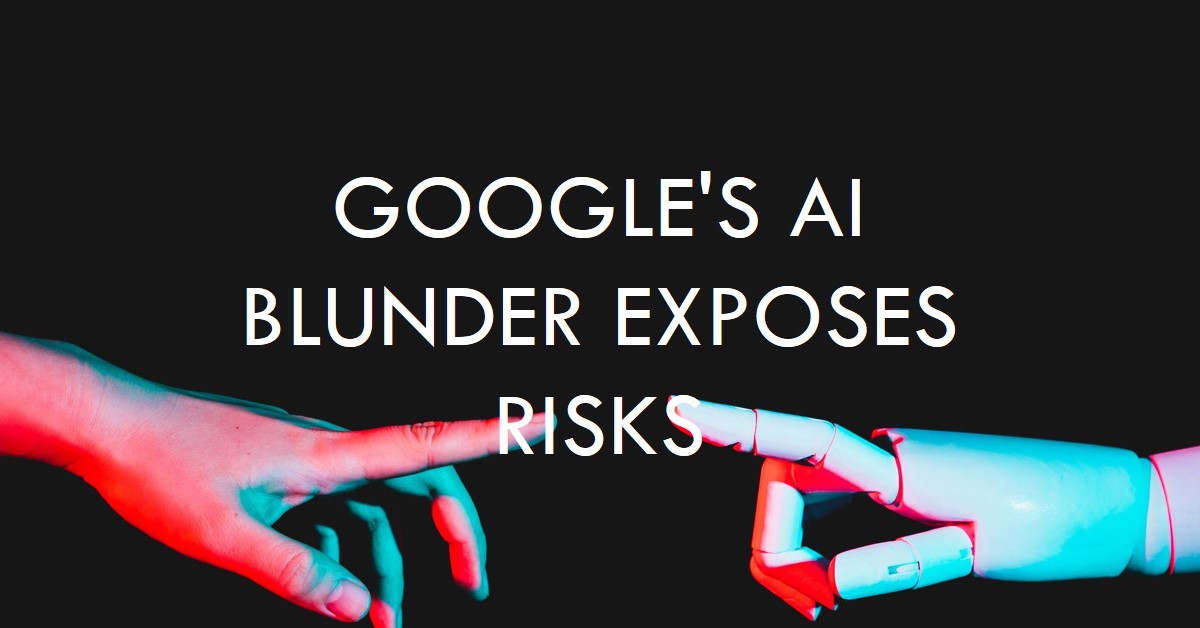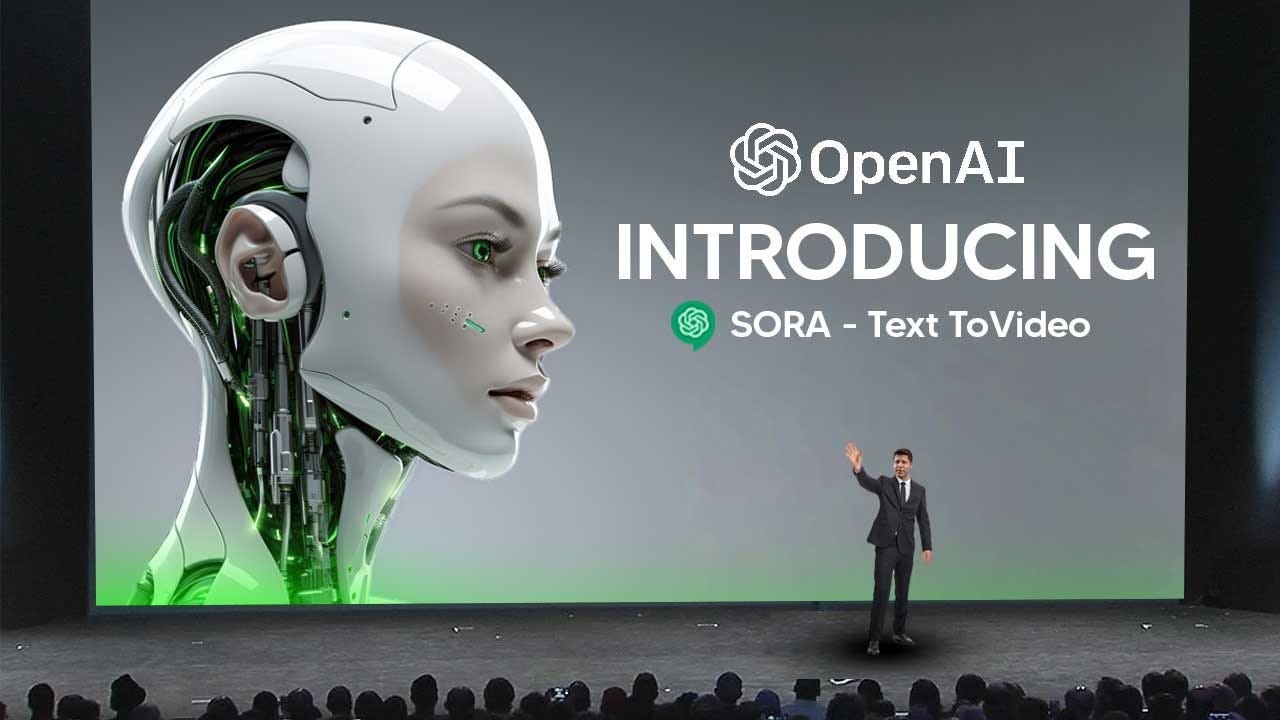AI
How Artificial Intelligence Can Revolutionize Science and Technology through Robotic Research

In the ever-evolving landscape of science and technology, the symbiotic relationship between artificial intelligence and robotic research is forging new frontiers, reshaping industries, and redefining our understanding of innovation. The synergy between these two domains is propelling us towards a future where robots are not just mechanical marvels, but intelligent beings that augment our capabilities and transform the very fabric of society. In this article, we delve into the profound impact of artificial intelligence on the realm of robotics, exploring how it is revolutionizing science and technology.
The Genesis of Innovation
Artificial intelligence (AI) serves as the cornerstone of this revolution. It has breathed life into robotics, endowing machines with cognitive abilities that were once the exclusive domain of humans. Through machine learning and neural networks, AI imparts robots with the capacity to learn from their surroundings, make autonomous decisions, and adapt to dynamic environments. This transformative fusion of AI and robotics has unlocked a plethora of possibilities across various industries.
Precision and Efficiency in Manufacturing
One of the most compelling applications of AI in robotics is witnessed in manufacturing. AI-driven robots are now instrumental in automating intricate tasks, enhancing precision, and reducing production costs. With the ability to analyze vast datasets in real-time, these robots optimize manufacturing processes, detect defects with unparalleled accuracy, and ensure consistently high-quality products. As a result, industries benefit from increased efficiency, reduced waste, and elevated production standards.
Advancements in Healthcare
In the field of healthcare, AI-powered robots are making substantial strides. Surgical robots, for instance, are changing the landscape of medical procedures. They offer surgeons a remarkable level of precision, enabling minimally invasive surgeries with reduced recovery times and improved patient outcomes. Moreover, AI-driven diagnostic robots can swiftly analyze medical images, assisting physicians in early disease detection and diagnosis. This intersection of AI and robotics promises a healthier future for humanity.
Exploration Beyond Boundaries
The integration of AI and robotics has also extended our reach into the cosmos. Space exploration missions now rely on autonomous robots equipped with AI algorithms. These robots can navigate challenging terrains, collect data, and make critical decisions in real-time, reducing the risks associated with human involvement. As we set our sights on Mars and beyond, AI-driven robotic missions will play an indispensable role in our quest for interstellar knowledge.
A Greener Tomorrow
Environmental conservation is another domain where AI-infused robots are making substantial contributions. Autonomous drones equipped with AI are employed for precision agriculture, monitoring ecosystems, and combating deforestation. These robots can analyze environmental data, identify areas of concern, and facilitate sustainable practices. By leveraging AI-driven robotics, we can work towards a greener and more sustainable future.
The Ethical Implications
While the synergy between AI and robotics holds immense promise, it also raises ethical considerations. As robots become more intelligent and autonomous, questions surrounding accountability, decision-making, and the potential for AI biases come to the forefront. Striking a balance between technological progress and ethical responsibility is paramount to ensure that the AI-robotics revolution benefits humanity as a whole.
Conclusion
In conclusion, the fusion of artificial intelligence and robotics is ushering in an era of unprecedented innovation in science and technology. From revolutionizing manufacturing processes to advancing healthcare and expanding our horizons in space, the possibilities are boundless. However, it is crucial to tread carefully, addressing ethical concerns while harnessing the full potential of this transformative partnership. As we navigate this exciting journey, one thing is certain: the future belongs to those who embrace the power of AI-driven robotics.
AI
A World Divided Over Artificial Intelligence: Geopolitics Gets in the Way of Global Regulation of a Powerful Technology

Introduction
Artificial Intelligence (AI) is rapidly advancing, and its impact on society is becoming more profound. The technology has the potential to revolutionize industries, improve healthcare, and even help solve global challenges like climate change. However, as with any powerful technology, there are concerns about its potential misuse and the need for regulation. The problem is, that the world is divided over AI, and geopolitics is getting in the way of global regulation.
The Geopolitical Divide
The divide over AI is not just about the technology itself, but also about the geopolitical implications of its development and use. The United States, China, and Europe are the three major players in AI, and each has its interests and priorities. The US is focused on maintaining its technological edge, while China is focused on becoming a world leader in AI. Europe, on the other hand, is focused on ensuring that AI is developed and used in a way that respects human rights and values.

The US and China are in a race to develop AI, and this competition is driving the development of the technology. However, this competition is also creating a divide over AI, as each country is focused on its interests and priorities. The US and China are not interested in global regulation, as they see it as a threat to their technological edge.
The European Union, on the other hand, is pushing for global regulation of AI. The EU has proposed a set of ethical guidelines for AI, which include principles like transparency, accountability, and non-discrimination. However, these guidelines are not legally binding, and there is no mechanism for enforcing them.
The Need for Global Regulation
The lack of global regulation of AI is a major concern. The technology has the potential to be used for both good and bad purposes, and without regulation, there is a risk that it will be used to harm people and society. For example, AI could be used to create deepfakes, which could be used to spread misinformation and manipulate public opinion.
Regulation is also needed to ensure that AI is developed and used in a way that respects human rights and values. For example, AI could be used to discriminate against certain groups of people, such as women or ethnic minorities. Regulation is needed to ensure that AI is developed and used in a way that is fair and inclusive.
The Challenges of Global Regulation
The challenge of global regulation of AI is that it is difficult to agree on a set of principles that are acceptable to all countries. The US and China are unlikely to agree to regulations that would limit their technological edge, while Europe is unlikely to agree to regulations that would compromise its values.
Another challenge is that AI is a rapidly evolving technology, and it is difficult to keep up with its development. Regulations that are put in place today may be outdated tomorrow, and there is a risk that they will stifle innovation.
Conclusion
The world is divided over AI, and geopolitics is getting in the way of global regulation of this powerful technology. However, the need for regulation is clear, as AI has the potential to be used for both good and bad purposes. The challenge is to find a way to regulate AI in a way that balances the interests of all countries and ensures that the technology is developed and used in a way that respects human rights and values.
AI
Google’s AI Blunder Exposes Risks in Rush to Compete with Microsoft

Google’s AI blunder has brought to light the risks that come with the scramble to catch up with Microsoft’s AI initiatives. In 2015, Google’s image recognition software mistakenly categorized two Black people as gorillas, which led to public backlash and embarrassment for the company. This blunder exposed the limitations of Google’s AI technology and the need to improve it.

Google has been investing heavily in AI technologies to keep up with Microsoft’s AI initiatives, which have been making significant strides in the field. Microsoft has been focusing on developing AI technologies that can be integrated into its existing products, such as Office, Skype, and Bing, to improve user experience and productivity. In contrast, Google has been investing in AI technologies for a wide range of applications, from self-driving cars to healthcare, in an attempt to diversify its portfolio and stay ahead of the competition.
Despite Google’s efforts, the blunder with its image recognition software highlights the risks of rushing to develop and implement AI technologies without proper testing and safeguards. This raises important questions about the implications of AI technologies for society, including issues related to bias, privacy, and accountability.
Key Takeaways
- Google’s AI blunder exposed the risks of rushing to catch up with Microsoft’s AI initiatives.
- Microsoft has been focusing on integrating AI technologies into its existing products, while Google has been investing in a wide range of applications.
- The blunder highlights the need for proper testing and safeguards to address issues related to bias, privacy, and accountability.
Overview of Google’s AI Blunder

Context of the AI Race
Artificial Intelligence (AI) has been a hot topic in the tech industry for years, with companies like Google, Microsoft, and Amazon racing to develop the most advanced AI technology. Google, in particular, has been at the forefront of this race, investing heavily in AI research and development.
Details of the Blunder
However, Google’s AI ambitions hit a roadblock in 2018 when the company’s AI system made a major blunder. The system, which was designed to identify objects in photos, misidentified a black couple as gorillas. The incident sparked outrage and led to accusations of racism against Google.
The incident was a major embarrassment for Google, which had been touting its AI capabilities as a key competitive advantage in the tech industry. The blunder showed that even the most advanced AI systems can make mistakes, and highlighted the risks of rushing to catch up with competitors like Microsoft.
In response to the incident, Google issued an apology and promised to improve its AI systems to prevent similar mistakes from happening in the future. However, the incident served as a wake-up call for the tech industry as a whole, highlighting the need for more rigorous testing and oversight of AI systems to prevent unintended consequences.
Implications for Google

Google’s AI blunder shows the risks in the scramble to catch up to Microsoft. The company’s mistake in 2018, where its AI system incorrectly identified black people as gorillas, highlighted the risks of using AI without proper testing and ethical considerations. This incident had significant implications for Google’s business, reputation, and trust among its users.
Business Impact
The AI blunder had a significant impact on Google’s business. The company had to apologize for the mistake and remove the feature from its product. This incident led to a loss of trust among its users, which could impact future sales. It also highlighted the need for proper testing and ethical considerations before launching AI products. If Google fails to address these issues, it could lead to further losses in revenue and market share.
Reputation and Trust
Google’s reputation and trust among its users were also impacted by the AI blunder. The incident raised questions about the company’s commitment to ethical AI practices. Users may be hesitant to use Google’s products in the future if they do not trust the company’s AI systems. This could lead to a loss of market share and revenue for the company.
To regain its users’ trust, Google needs to take steps to address the ethical considerations of AI. The company needs to ensure that its AI systems are properly tested and that they do not perpetuate harmful biases. It also needs to be transparent about its AI practices and engage in open dialogue with its users.
In conclusion, Google’s AI blunder showed the risks of using AI without proper testing and ethical considerations. The incident had significant implications for Google’s business, reputation, and trust among its users. To avoid similar incidents in the future, Google needs to take steps to address the ethical considerations of AI and regain its users’ trust.
Comparison with Microsoft’s AI Initiatives

Microsoft’s Position
Microsoft has been investing heavily in AI for years and has established itself as a leader in the field. The company has a dedicated AI division that works on developing AI-powered tools and services for businesses and consumers. Microsoft’s AI initiatives include the development of intelligent assistants, chatbots, and machine learning models for predictive analytics.
Microsoft has also been investing in AI research and development, collaborating with academic institutions and research organizations to advance the field. The company’s AI research focuses on areas such as natural language processing, computer vision, and deep learning.
Google vs. Microsoft: Strategic Moves
Google has been trying to catch up to Microsoft in the AI space, but its recent blunder shows the risks of rushing to do so. Google’s AI blunder involved the use of biased data in its facial recognition software, which led to inaccurate and discriminatory results.
In contrast, Microsoft has been more cautious in its approach to AI, emphasizing the importance of ethical AI development and responsible use of AI-powered tools. The company has established AI ethics principles and has been working on developing AI models that are fair, transparent, and accountable.
Microsoft has also been focusing on developing AI-powered tools and services that can be integrated with existing business workflows, making it easier for businesses to adopt AI. The company’s AI tools, such as Azure Machine Learning and Cognitive Services, are designed to be easy to use and accessible to businesses of all sizes.
In summary, while both Google and Microsoft are investing heavily in AI, Microsoft’s more cautious and responsible approach to AI development has helped it establish itself as a leader in the field. Google’s recent blunder highlights the risks of rushing to catch up to competitors without proper attention to ethical considerations.
Frequently Asked Questions

What recent event highlighted the risks associated with AI development in tech giants?
Google’s AI blunder in 2018 highlighted the risks associated with AI development in tech giants. The company’s AI system, which was designed to flag offensive content on YouTube, was found to be flagging and removing non-offensive content. This event showed that even the most advanced AI systems can make mistakes and that the risks associated with AI development are significant.
How are Google’s AI advancements being impacted by competition with Microsoft?
Google’s AI advancements are being impacted by competition with Microsoft, which is setting the pace in AI innovation. Microsoft has been investing heavily in AI research and development and has made significant progress in the field. Google is now playing catch up, which has put pressure on the company to rush its AI technology to market.
What are the potential dangers of rushing AI technology to market?
The potential dangers of rushing AI technology to market include the risk of creating systems that are biased, inaccurate, or untrustworthy. When companies rush to bring AI systems to market, they may not have the time to adequately test and refine their technology, which can lead to serious problems down the line. Rushing AI technology to market can also lead to a lack of transparency and accountability, which can erode public trust in the technology.
In what ways is Microsoft setting the pace in AI innovation?
Microsoft is setting the pace in AI innovation by investing heavily in AI research and development and by partnering with other companies to advance the field. The company has made significant progress in areas such as natural language processing, computer vision, and machine learning. Microsoft is also working to make AI more accessible to developers and businesses by offering tools and services that make it easier to build and deploy AI systems.
What lessons can be learned from Google’s AI development challenges?
One lesson that can be learned from Google’s AI development challenges is the importance of transparency and accountability in AI development. When companies are transparent about their AI systems and how they are being developed, tested, and deployed, they can build trust with the public and avoid potential problems down the line. Another lesson is the importance of testing and refining AI systems before they are released to the public. This can help to identify and address potential problems before they become widespread.
How is the race for AI dominance between major tech companies affecting the industry?
The race for AI dominance between major tech companies is driving innovation and investment in the field, which is leading to significant advancements in AI technology. However, it is also creating a competitive landscape that can be challenging for smaller companies and startups. The race for AI dominance is also raising concerns about the potential risks associated with AI development, including the risk of creating biased or untrustworthy systems.
AI
Unveiling the Brilliance of Chinese Innovators: The Success Story of OpenAI’s Sora Development Team

Introduction:
In the realm of artificial intelligence, the spotlight often shines on groundbreaking innovations that push the boundaries of what technology can achieve. Recently, the Chinese developers behind OpenAI’s text-to-video generator, Sora, have captured attention both internationally and at home. This article delves into the journey of Jing Li and Ricky Wang Yu, two key members of the Sora development team, as they receive well-deserved acclaim for their contributions to advancing AI applications.
The Rise of Sora:
OpenAI’s Sora has emerged as a game-changer in the field of AI, bridging the gap between text and video generation with unprecedented accuracy and efficiency. The technology behind Sora represents a significant leap forward in how machines interpret and translate textual information into visual content.
Meet the Masterminds: Jing Li and Ricky Wang Yu:
Jing Li and Ricky Wang Yu stand out as pivotal figures in the success story of Sora. Their expertise, dedication, and innovative thinking have played a crucial role in shaping the capabilities of this revolutionary text-to-video generator. Let’s explore their backgrounds, contributions, and the impact they have had on the development of Sora.
China’s Embrace of Innovation:
The recognition bestowed upon Jing Li and Ricky Wang Yu within China reflects the nation’s fervor for technological advancement. As a global powerhouse in AI research and development, China continues to foster an environment where innovation thrives, propelling projects like Sora to new heights of success.
The Significance of Sora in AI Evolution:
Sora’s emergence as a cutting-edge text-to-video generator marks a significant milestone in the evolution of AI applications. By seamlessly translating textual input into visually compelling output, Sora opens up a world of possibilities for industries ranging from entertainment to education.
Challenges and Triumphs:
Behind every groundbreaking innovation lies challenges that must be overcome through perseverance and ingenuity. Jing Li, Ricky Wang Yu, and their fellow team members at OpenAI have navigated obstacles with determination, turning setbacks into opportunities for growth and learning.
Future Prospects for Sora and Beyond:
As Sora continues to garner acclaim on the international stage, its creators look towards the future with optimism and ambition. The success of this project serves as a testament to what can be achieved through collaboration, innovation, and a relentless pursuit of excellence in AI research.
Conclusion:
In conclusion, the story of Jing Li and Ricky Wang Yu exemplifies the spirit of innovation that drives progress in the field of artificial intelligence. Their contributions to OpenAI’s Sora project underscore the transformative power of technology to shape our world in ways we never thought possible. As we celebrate their achievements, we are reminded that the future holds endless possibilities for those who dare to dream big and push the boundaries of what is deemed achievable in AI development.
-
Digital5 years ago
Social Media and polarization of society
-
Digital5 years ago
Pakistan Moves Closer to Train One Million Youth with Digital Skills
-
Digital4 years ago
Karachi-based digital bookkeeping startup, CreditBook raises $1.5 million in seed funding
-
News5 years ago
Dr . Arif Alvi visits the National Museum of Pakistan, Karachi
-
Kashmir5 years ago
Pakistan Mission Islamabad Celebrates “KASHMIRI SOLIDARITY DAY “
-
Digital5 years ago
WHATSAPP Privacy Concerns Affecting Public Data -MOIT&T Pakistan
-
Business4 years ago
Are You Ready to Start Your Own Business? 7 Tips and Decision-Making Tools
-
China4 years ago
TIKTOK’s global growth and expansion : a bubble or reality ?
















